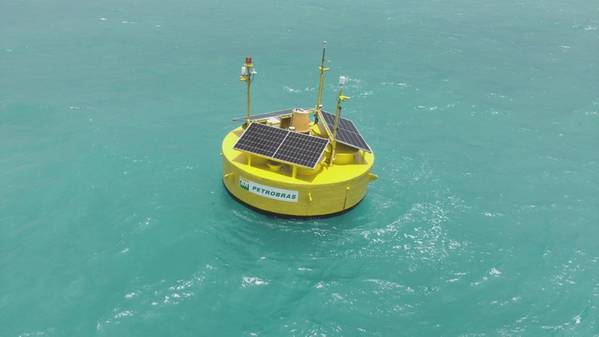
Petrobras has announced plans to invest $10.5 million in a new sea wind testing and measuring phase by releasing new BRAVO buoy units to collect, monitor, and assess offshore wind resources.
The technology, designed for the Brazilian sea, is the outcome of a successful R&D I project by the Petrobras Center for Research, Development, and Innovation (Cenpes) in partnership with the SENAI Institute of Renewable Energy Innovation (ISI-ER), and the SENAI Institute of Onboard System Innovation (ISI-SE).
The first five new units will start operating in December, while the others will be in late 2025, resuming the projects that began with the pioneering Bravo (Buoy for Offshore Wind Evaluation) unit, which has just completed one year of nonstop wind measuring operations in the Areia Branca Sea on the coast of Rio Grande do Norte.
Bravo is a floating Lidar (Light Detection and Ranging) model developed with national technology for the first time.
It is an optical sensor that uses laser beams to measure wind speed and direction, generating data compatible with the wind turbine operation environment. It can also record weather variables like atmospheric pressure, air temperature, and relative humidity, including oceanographic variables like waves and sea currents.
All that data is essential to determine the potential of a wind energy production area. The equipment weighs seven tons, measures four meters in diameter and four meters in height, and has an energy system powered by photovoltaic solar energy modules.
"It's another vital step in our energy transition journey. This project phase is necessary to validate the technology and prompt Brazil's biggest offshore wind mapping campaign, which is vital to assess the technical feasibility of future offshore wind energy facilities," said Maurício Tolmasquim, Petrobras's Energy Transition and Sustainability Director.
"This year, the equipment has recorded nonstop measurements, without intercurrences, which represents an important scientific milestone for the Brazilian offshore wind energy since the analyses consider a complete climatic period, including months of the year with more intense wind," added Antonio Medeiros, ISI-ER's Research & Development Coordinator.
Petrobras invested almost $2 million in the first BRAVO version through the Research and Technological Development Program for the Electric Power Sector regulated by the National Electric Power Agency (ANEEL).
Phase two of measurements will receive funds allotted to the RD&I of the National Oil, Natural Gas, and Biofuel Agency (ANP).